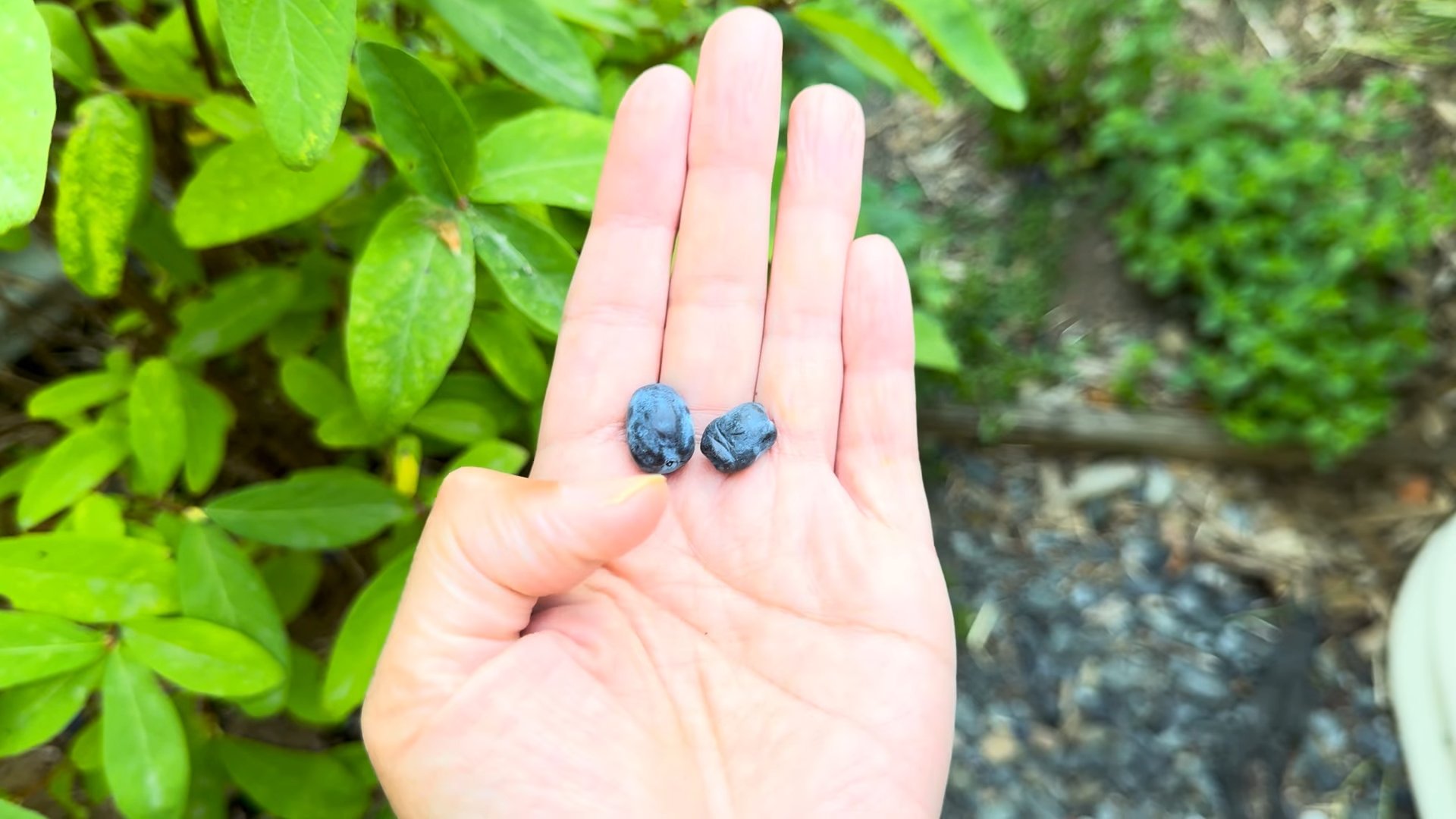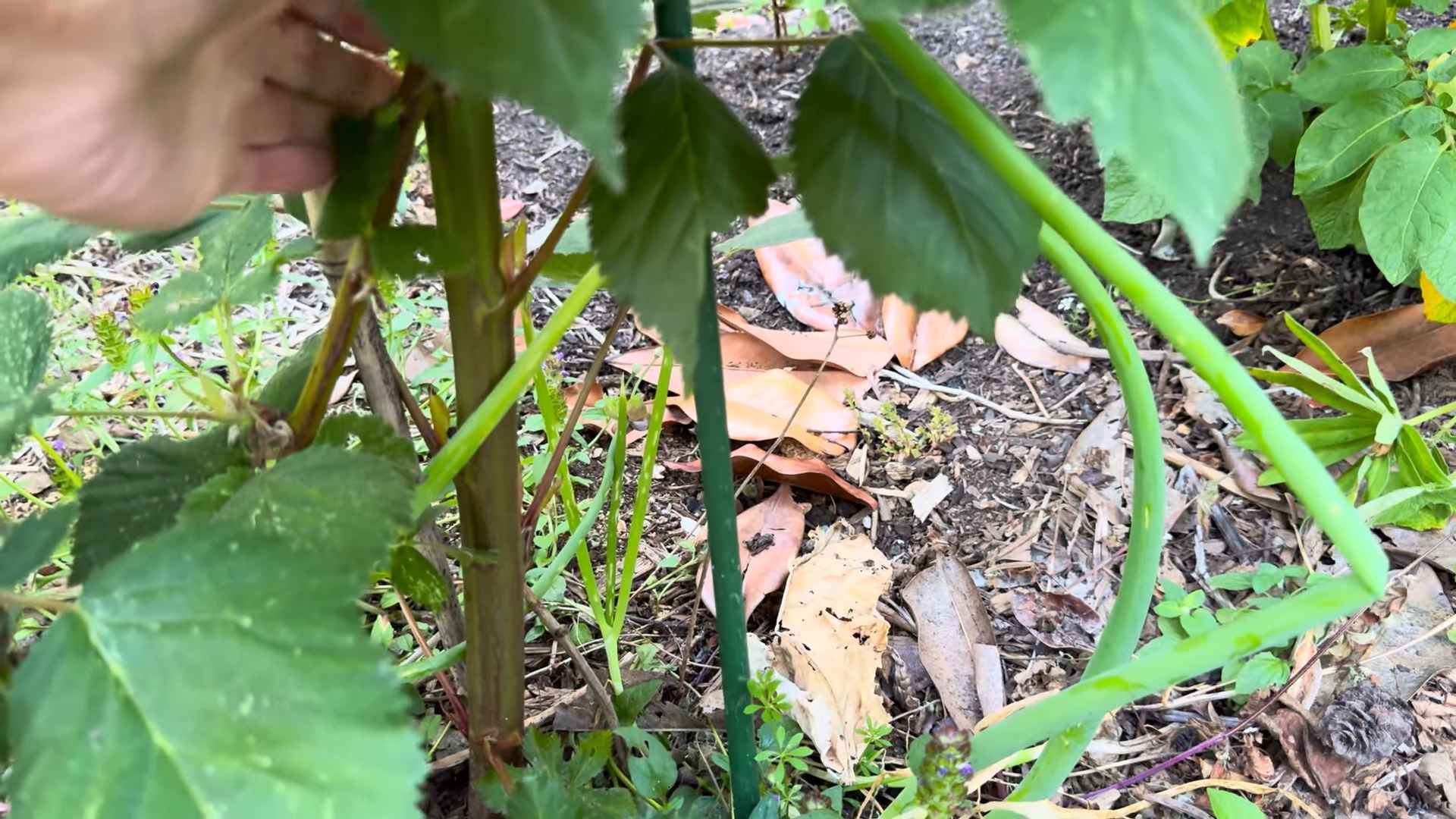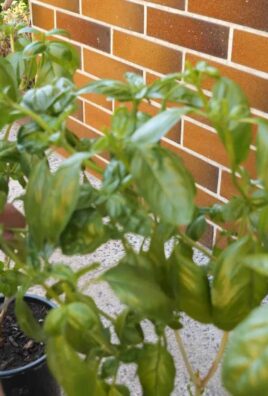Growing Honeyberries might sound like an exotic adventure, but trust me, it’s a surprisingly easy and rewarding journey you can embark on right in your own backyard! Forget those fussy fruits that demand constant attention; honeyberries are the cool kids of the berry world – low-maintenance, incredibly hardy, and bursting with a unique sweet-tart flavor that’s unlike anything you’ve tasted before.
For centuries, these delightful berries have been cherished in colder climates, particularly in Russia and Japan, where they’re known as “Haskap.” Imagine generations of families enjoying these early-season treats, a welcome burst of flavor after long winters. Now, you can bring that same tradition to your own garden!
Why should you consider growing honeyberries? Well, besides their delicious taste (think a mix of blueberry, raspberry, and black currant!), they’re packed with antioxidants and vitamins. Plus, they’re one of the first fruits to ripen in the spring, giving you a head start on the berry season. In this article, I’m going to share my favorite DIY tricks and hacks for successfully growing honeyberries, even if you’re a complete beginner. Get ready to impress your friends and family with your homegrown honeyberry harvest!

Growing Honeyberries: A DIY Guide to Bountiful Berries in Your Backyard
Hey there, fellow gardening enthusiasts! I’m so excited to share my experience with growing honeyberries. These little powerhouses are not only delicious but also incredibly easy to cultivate, even if you’re a beginner like I once was. Get ready to enjoy a harvest of sweet and tangy berries earlier than almost anything else in your garden!
Choosing the Right Honeyberry Varieties
Before we dive into the planting process, it’s crucial to understand that honeyberries need cross-pollination to produce fruit. This means you’ll need to plant at least two different varieties. Don’t worry, it’s not complicated!
Here’s what I’ve learned about some popular varieties:
* ‘Aurora’: This variety is known for its large, elongated berries and excellent flavor. It’s a mid-season bloomer and a reliable producer.
* ‘Honeybee’: A classic choice, ‘Honeybee’ is a good pollinator for other varieties and produces sweet, slightly tart berries.
* ‘Borealis’: This compact variety is perfect for smaller gardens. It offers a good yield of flavorful berries.
* ‘Indigo Treat’ & ‘Indigo Gem’: These two are often planted together as they are excellent pollinators for each other. They produce a good amount of berries with a unique, slightly almond-like flavor.
* ‘Strawberry Sensation’: As the name suggests, this variety has a distinct strawberry-like flavor. It’s a later-blooming variety, so keep that in mind when choosing pollinators.
Important Note: Make sure the varieties you choose are compatible bloomers. This means they need to flower at roughly the same time to ensure proper pollination. Most nurseries will provide this information.
Preparing Your Planting Site
Honeyberries are pretty adaptable, but they thrive in well-drained soil with a slightly acidic pH (around 6.0-6.5). Here’s how I prepare my planting site:
* Sunlight: Honeyberries prefer full sun (at least 6 hours of direct sunlight per day) for optimal fruit production. However, they can tolerate partial shade, especially in hotter climates.
* Soil Testing: I highly recommend getting your soil tested to determine its pH and nutrient levels. You can purchase a soil testing kit at most garden centers or send a sample to your local agricultural extension office.
* Soil Amendment: Based on your soil test results, amend your soil accordingly. If your soil is too alkaline, you can add sulfur or peat moss to lower the pH. If it’s lacking in nutrients, incorporate compost, well-rotted manure, or a balanced fertilizer.
* Drainage: Honeyberries don’t like soggy roots, so ensure your planting site has good drainage. If your soil is heavy clay, consider adding organic matter like compost or shredded bark to improve drainage.
* Weed Removal: Clear the planting area of all weeds and grass. This will prevent competition for nutrients and water.
Planting Your Honeyberries: A Step-by-Step Guide
Now for the fun part – planting! Here’s my tried-and-true method:
1. Timing is Key: The best time to plant honeyberries is in early spring or fall when the plants are dormant. This gives them time to establish their roots before the growing season.
2. Dig the Holes: Dig holes that are twice as wide as the root ball and just as deep. This will give the roots plenty of room to spread out.
3. Prepare the Root Ball: Gently remove the honeyberry plant from its container. If the roots are tightly bound, gently loosen them with your fingers.
4. Planting Depth: Place the plant in the hole, ensuring that the top of the root ball is level with the surrounding soil.
5. Backfill the Hole: Backfill the hole with the amended soil, gently tamping it down to remove any air pockets.
6. Water Thoroughly: Water the newly planted honeyberry deeply to help settle the soil and hydrate the roots.
7. Mulch: Apply a layer of mulch around the base of the plant to help retain moisture, suppress weeds, and regulate soil temperature. I like to use wood chips or shredded bark.
8. Spacing: Space your honeyberry plants about 4-5 feet apart to allow for adequate growth and air circulation.
Caring for Your Honeyberries: A Year-Round Guide
Once your honeyberries are planted, it’s important to provide them with proper care to ensure a healthy and productive harvest.
* Watering: Honeyberries need consistent moisture, especially during dry periods. Water deeply and regularly, especially during the first year after planting. Aim for about 1 inch of water per week.
* Fertilizing: Fertilize your honeyberries in early spring with a balanced fertilizer. Follow the instructions on the fertilizer package. Avoid over-fertilizing, as this can lead to excessive vegetative growth at the expense of fruit production. I usually use a slow-release fertilizer.
* Pruning: Honeyberries don’t require heavy pruning, but it’s important to remove any dead, damaged, or crossing branches. Prune in late winter or early spring before new growth begins. After about 5-7 years, you can start removing some of the older canes to encourage new growth and improve air circulation.
* Weed Control: Keep the area around your honeyberries free of weeds. Hand-pull weeds regularly or use a hoe to cultivate the soil. Be careful not to damage the shallow roots of the honeyberry plants.
* Pest and Disease Control: Honeyberries are generally pest and disease resistant. However, they can occasionally be affected by aphids, spider mites, or powdery mildew. Monitor your plants regularly and take action if you notice any problems. Insecticidal soap or horticultural oil can be used to control aphids and spider mites. Fungicides can be used to treat powdery mildew.
* Bird Protection: Birds love honeyberries just as much as we do! To protect your crop, consider covering your plants with netting before the berries start to ripen. This is the most effective way to prevent bird damage.
Harvesting Your Honeyberries
The moment you’ve been waiting for! Honeyberries typically ripen in late spring or early summer, earlier than most other berries.
* Ripeness: Honeyberries are ripe when they turn a deep blue color and are soft to the touch. They should easily detach from the plant.
* Harvesting Technique: Gently pick the berries by hand. Avoid pulling or tugging on the branches, as this can damage the plant.
* Storage: Honeyberries can be stored in the refrigerator for up to a week. They can also be frozen for longer storage. I love to freeze them and use them in smoothies, jams, and pies throughout the year.
Troubleshooting Common Honeyberry Problems
Even with the best care, you might encounter a few challenges along the way. Here are some common problems and how to address them:
* Poor Fruit Set: If your honeyberries aren’t producing much fruit, it could be due to insufficient pollination, lack of sunlight, or nutrient deficiencies. Make sure you have at least two compatible varieties planted, provide adequate sunlight, and fertilize your plants regularly.
* Leaf Yellowing: Yellowing leaves can be a sign of nutrient deficiencies, overwatering, or poor drainage. Check your soil pH and nutrient levels and adjust accordingly. Ensure your planting site has good drainage and avoid overwatering.
* Pest Infestations: Monitor your plants regularly for signs of pests like aphids or spider mites. Treat infestations promptly with insecticidal soap or horticultural oil.
* Disease Problems: Powdery mildew can sometimes affect honeyberries, especially in humid conditions. Improve air circulation by pruning your plants and apply a fungicide if necessary.
Propagating Honeyberries
Want to expand your honeyberry patch? Here are a couple of ways to propagate them:
* Cuttings: Take softwood cuttings in late spring or early summer. Dip the cut ends in rooting hormone and plant them in a well-draining potting mix. Keep the cuttings moist and in a shaded location until they develop roots.
* Layering: Bend a low-growing branch to the ground and bury a portion of it in the soil. Weigh it down with a rock or brick. Once roots have formed, you can sever the branch from the parent plant and transplant it to a new location.
Enjoying Your Honeyberry Harvest
Now that you’ve successfully grown and harvested your honeyberries, it’s time to enjoy the fruits of your labor! Here are some of my favorite ways to use honeyberries:
* Fresh Eating: Simply pop them in your mouth for a sweet and tangy treat!
* Smoothies: Add honeyberries to your favorite smoothie recipe for a boost of flavor and nutrients.
* Jams and Jellies: Honeyberries make delicious jams and jellies.
* Pies and Cobblers: Use honeyberries in pies, cobblers, and

Conclusion
So, there you have it! Growing honeyberries at home isn’t just a gardening project; it’s an investment in your health, your garden’s biodiversity, and your culinary adventures. The unique sweet-tart flavor of these early-fruiting berries is unlike anything you’ll find in the supermarket, and the satisfaction of harvesting your own homegrown bounty is truly unparalleled.
Why is this DIY trick a must-try? Because it empowers you to control the quality of your food, reduce your reliance on commercially grown produce, and enjoy a delicious and nutritious treat straight from your backyard. Honeyberries are also incredibly resilient and relatively low-maintenance, making them an ideal choice for both experienced gardeners and beginners alike. They are one of the first fruits to ripen in the spring, often before strawberries, providing a much-needed burst of fresh flavor after a long winter.
Consider these suggestions and variations to personalize your honeyberry growing experience:
* Experiment with different varieties: There are numerous honeyberry cultivars available, each with its own unique flavor profile and growth habit. Research which varieties are best suited to your climate and taste preferences. Some popular choices include ‘Aurora’, ‘Honeybee’, and ‘Blue Velvet’.
* Companion planting: Enhance your honeyberry patch by planting beneficial companion plants nearby. Consider incorporating herbs like lavender or rosemary, which can attract pollinators and deter pests.
* Creative culinary uses: Don’t limit yourself to just eating honeyberries fresh. Explore their versatility by using them in jams, jellies, pies, smoothies, and even savory sauces. Their tartness pairs beautifully with meats like pork and duck.
* Propagation: Once your honeyberry bushes are established, you can easily propagate them through cuttings or layering, allowing you to expand your honeyberry patch or share plants with friends and family.
* Protecting your harvest: Birds love honeyberries just as much as we do! Consider using netting to protect your bushes from hungry birds and ensure a bountiful harvest.
We wholeheartedly encourage you to embark on this rewarding journey of growing honeyberries. It’s a simple yet profound way to connect with nature, nourish your body, and add a touch of sweetness to your life. The initial investment in plants and soil preparation will pay off handsomely in the years to come, providing you with a consistent supply of delicious and nutritious berries.
Don’t be intimidated by the prospect of starting a new gardening project. Honeyberries are remarkably forgiving plants, and with a little bit of care and attention, you’ll be enjoying your own homegrown berries in no time. Remember to choose a sunny location with well-drained soil, provide adequate watering, and protect your plants from pests and diseases.
We are confident that you’ll find growing honeyberries to be a delightful and fulfilling experience. So, grab your gardening gloves, get your hands dirty, and prepare to be amazed by the abundance and flavor of these remarkable berries.
Now, we want to hear from you! Have you tried growing honeyberries before? What are your favorite varieties or growing tips? Share your experiences, successes, and challenges in the comments below. Let’s create a community of honeyberry enthusiasts and learn from each other. Your insights could inspire others to take the plunge and discover the joys of growing their own honeyberries. We are eager to hear your stories and learn from your experiences. Happy gardening!
Frequently Asked Questions (FAQ)
What are honeyberries and why should I grow them?
Honeyberries, also known as haskaps, are elongated, blue-skinned berries that are native to colder climates. They are among the first fruits to ripen in the spring, often before strawberries. They are prized for their unique sweet-tart flavor, which is often described as a combination of blueberry, raspberry, and black currant. Growing honeyberries allows you to enjoy fresh, homegrown fruit early in the season, control the quality of your produce, and add a unique and nutritious berry to your diet. They are also relatively easy to grow and require minimal maintenance once established.
What climate is best for growing honeyberries?
Honeyberries are incredibly cold-hardy and thrive in USDA zones 2-9. They require a period of winter chill to properly set fruit, making them well-suited for regions with cold winters. While they can tolerate warmer climates, they may not produce as abundantly in areas with very hot summers. Choose varieties that are specifically bred for your region to ensure optimal growth and fruit production.
What kind of soil do honeyberries need?
Honeyberries prefer well-drained soil that is rich in organic matter. They can tolerate a range of soil pH levels, but a slightly acidic to neutral pH (6.0-7.0) is ideal. Before planting, amend your soil with compost or other organic matter to improve drainage and fertility. Avoid planting in heavy clay soil, as this can lead to root rot. If your soil is poorly drained, consider planting your honeyberries in raised beds.
How much sunlight do honeyberries need?
Honeyberries thrive in full sun, which means they need at least six hours of direct sunlight per day. While they can tolerate partial shade, they will produce more fruit in a sunny location. Choose a planting site that receives ample sunlight throughout the day.
How often should I water honeyberries?
Honeyberries need consistent watering, especially during the first year after planting. Water deeply and regularly, especially during dry periods. Once established, they are relatively drought-tolerant, but they will still benefit from regular watering, especially during fruit development. Avoid overwatering, as this can lead to root rot.
Do honeyberries need pollination?
Yes, honeyberries require cross-pollination to produce fruit. This means you need to plant at least two different varieties of honeyberries that bloom at the same time. Planting multiple varieties will ensure adequate pollination and increase fruit production. Consider planting varieties that are known to be good pollinators for each other.
When do honeyberries ripen?
Honeyberries are among the first fruits to ripen in the spring, typically in late May or early June, depending on your climate. The berries are ready to harvest when they are fully blue and easily detach from the bush. Taste-test the berries to ensure they are ripe before harvesting.
How do I protect honeyberries from birds?
Birds love honeyberries, so it’s important to protect your bushes from hungry birds. The most effective way to protect your harvest is to cover your bushes with netting. You can also use bird deterrents, such as reflective tape or scarecrows, but these may not be as effective as netting.
Do honeyberries have any pest or disease problems?
Honeyberries are relatively pest and disease-resistant. However, they can be susceptible to aphids, spider mites, and powdery mildew. Monitor your plants regularly for signs of pests or diseases and take action promptly if you notice any problems. Use organic pest control methods whenever possible.
How do I prune honeyberries?
Honeyberries require minimal pruning. Prune them in late winter or early spring to remove any dead, damaged, or crossing branches. You can also prune to shape the bush and improve air circulation. Avoid heavy pruning, as this can reduce fruit production.
Can I grow honeyberries in containers?
Yes, honeyberries can be grown in containers, but you’ll need to choose a large container (at least 15 gallons) and use a well-draining potting mix. Container-grown honeyberries will need more frequent watering and fertilization than those grown in the ground. Choose a sunny location for your container-grown honeyberries.
How long does it take for honeyberries to produce fruit?
Honeyberries typically start producing fruit within one to two years after planting. However, it may take a few years for them to reach their full production potential. Be patient and provide your plants with proper care, and you’ll be rewarded with a bountiful harvest in the years to come.
Where can I buy honeyberry plants?
Honeyberry plants can be purchased from local nurseries, garden centers, and online retailers. Choose reputable sources that offer healthy, well-rooted plants. Be sure to select varieties that are suitable for your climate and growing conditions.





Leave a Comment